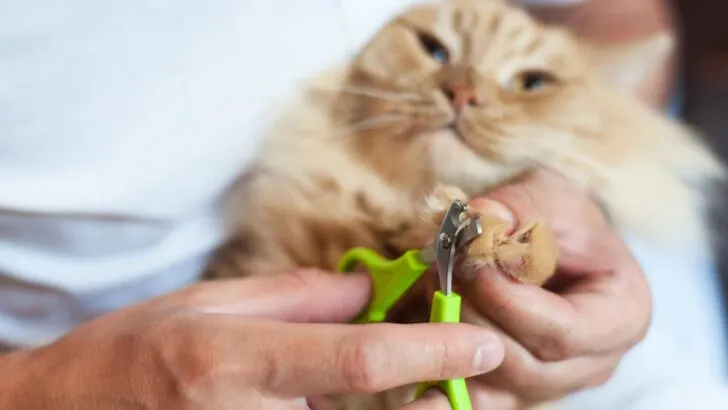Cats are known for their sharp claws, which can cause scratches on furniture, carpets, and even their owners. Trimming a cat’s nails is an important part of their grooming routine that can help prevent these issues. But how often should you trim your cat’s nails?
Trimming your cat’s nails every 2-4 weeks is generally recommended. Kittens and younger cats may need their nails trimmed more frequently than older cats.
The frequency of nail trimming for cats depends on several factors, including their age, lifestyle, and nail growth rate. Indoor cats may also need more frequent trims compared to outdoor cats, which may naturally wear down their nails by scratching on trees and other surfaces.
However, this can vary depending on the individual cat’s needs. Pay attention to your cat’s nails and trim them as needed to prevent them from becoming too long or sharp.
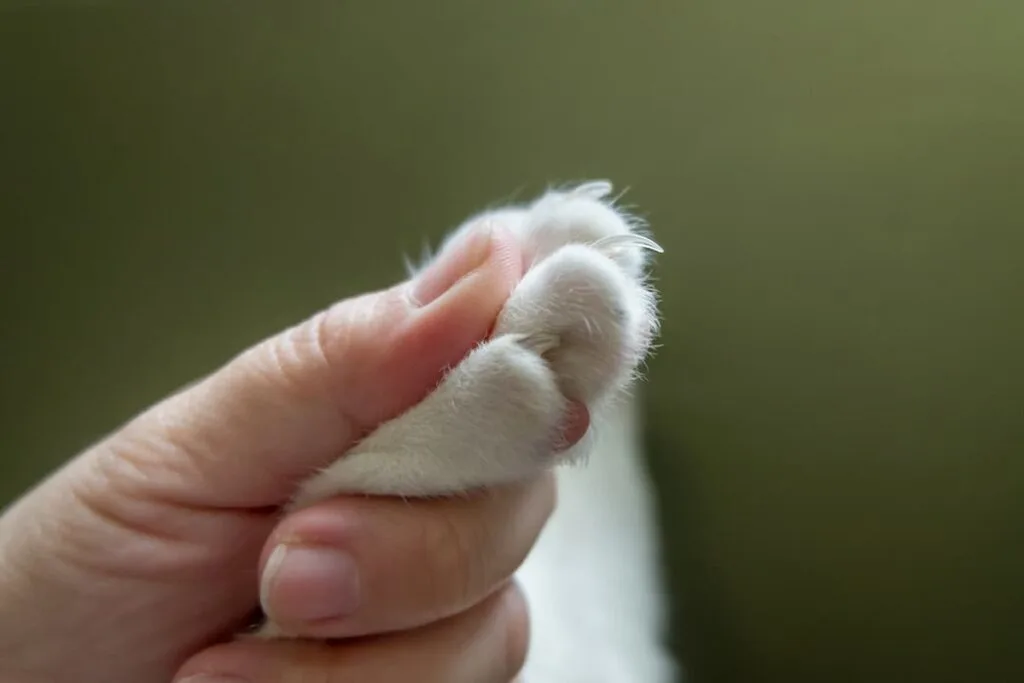
Why Should You Trim Your Cat’s Nails?
As a cat owner, you may wonder why trimming your cat’s nails is necessary. After all, cats are known for their sharp claws, which they use for hunting, climbing, and self-defense. However, there are several reasons why trimming your cat’s nails is important:
- Prevent damage to your furniture and belongings: Cats are natural scratchers, and if their nails are too long, they can cause damage to your furniture, carpets, and other belongings. Trimming their nails regularly can help prevent this.
- Reduce the risk of injury: If your cat’s nails are too long, they can get caught on things, causing painful injuries. Trimming their nails can reduce the risk of this happening.
- Improve your cat’s hygiene: Long nails can collect dirt and bacteria, leading to infections. Trimming your cat’s nails can help keep them clean and healthy.
- Prevent painful ingrown nails: If your cat’s nails are too long, they can grow into the paw pads, causing pain and discomfort. Trimming their nails can prevent this from happening.
Trimming your cat’s nails is important to their overall health and well-being. It may take some practice to get your cat comfortable with the process, but with patience and consistency, you can make it a stress-free experience for you and your furry friend.

Facts Affecting The Frequency Of Nail Trimming
As a cat owner, you may wonder how often you should trim your cat’s nails. The answer is not straightforward, as it depends on several factors, including your cat’s age, lifestyle, and activity level.
However, most cats generally need their nails trimmed once every two weeks and every two months. Here are some factors to consider when determining how often to trim your cat’s nails:
Indoor vs. Outdoor Cats
Indoor cats typically need their nails trimmed more often than outdoor cats. This is because indoor cats are not as active as outdoor cats and do not wear down their nails as much. On the other hand, outdoor cats may naturally wear down their nails by scratching on trees or other rough surfaces.
This is incredibly true as our cat’s nails need to be trimmed frequently. To help with this, we give him scratch pads so he can naturally file them down independently. He doesn’t like having his nails trimmed, so it’s important to limit this activity with him as much as we can.
Cat’s Age
Kittens have softer nails that grow faster than adult cats. Therefore, kittens may need their nails trimmed more frequently, possibly every week. As cats age, their nails become harder and grow more slowly, so they may not need their nails trimmed as often.
Cat’s Activity Level
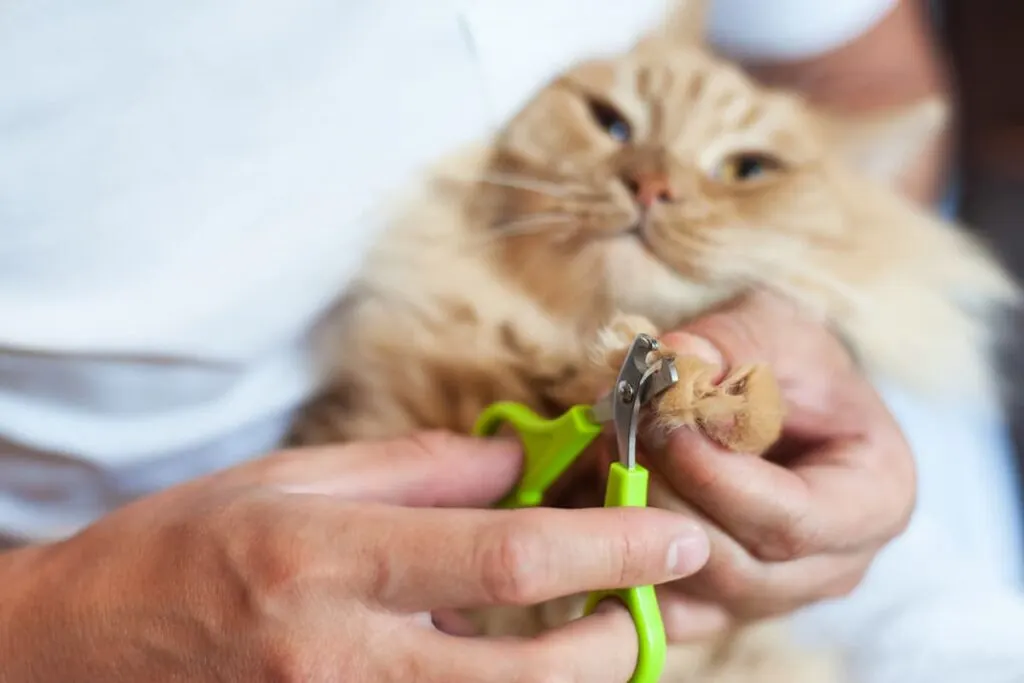
Active cats that climb and scratch more may naturally wear down their nails more quickly than less active cats. Therefore, they may only need their nails trimmed sometimes.
It’s not just with climbing but also with scratching surfaces like doors, carpets, and scratch pads. Lazier cats, particularly older cats that aren’t as active, will probably need more frequent nail trimming than active cats.
Signs Your Cat’s Nails Need Trimming
If you hear your cat’s nails clicking on the floor as they walk or if you notice your cat’s nails catching on furniture or carpet, it’s time to trim their nails. You should also check your cat’s nails regularly for signs of overgrowth, such as curling or growing into the paw pad.
In summary, there is no one-size-fits-all answer to how often you should trim your cat’s nails. However, by considering your cat’s age, activity level, and lifestyle, you can determine a trimming schedule that works best for your feline friend.
How to Trim Your Cat’s Nails?
Trimming your cat’s nails is a simple process, but half the battle is making sure your cat actually enjoys the experience. Here are some tips and step-by-step instructions to trimming your cats nails.
Gather Your Supplies
Before trimming your cat’s nails, ensure you have all the necessary supplies.
You’ll need a pair of sharp, high-quality nail clippers designed specifically for cats. Avoid using human nail clippers, as they can crush the nail and cause pain to your furry friend. You may also want to have some styptic powder on hand in case you accidentally cut the nail too short and cause bleeding.
I recommend a brand like Pet Republique with ergonomic handles for easy cutting.
Get Your Cat Comfortable
Trimming your cat’s nails can be a stressful experience for both you and your feline friend. To make the process as smooth as possible:
- Choose a quiet and comfortable area to do the trimming.
- Make sure your cat is relaxed and calm before you start. You can try petting and talking to your cat to help them feel more at ease.
- If your cat is particularly anxious, consider using a calming spray or diffuser to help them relax.
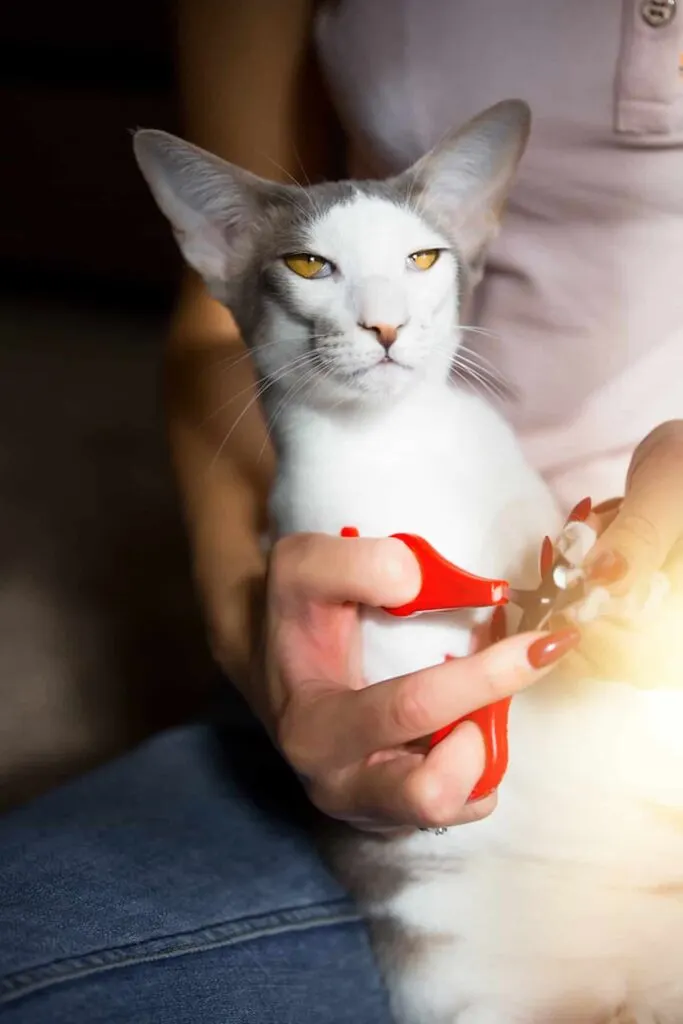
Trimming Your Cat’s Nails
Once your cat is comfortable, it’s time to start trimming its nails. Gently hold your cat’s paw in one hand and use the other hand to trim the nail.
Make sure you only cut the tip of the nail, avoiding the pink part, known as the quick. Cutting quickly can be painful and cause bleeding. If you need to figure out where the quick is, look for the pink area inside the nail.
If your cat is squirmy or uncooperative, you may need to enlist the help of a friend or family member to hold them still while you trim their nails. Take breaks as needed to avoid stressing out your cat. Remember, every cat is different, and the frequency of nail trimming will vary depending on your cat’s age, activity level, and lifestyle.
Generally, most cats will need their nails trimmed every 10-14 days. However, some cats may need more frequent trimming, while others may be able to go longer between trims. Keep an eye on your cat’s nails and trim them as needed to keep them healthy and comfortable.
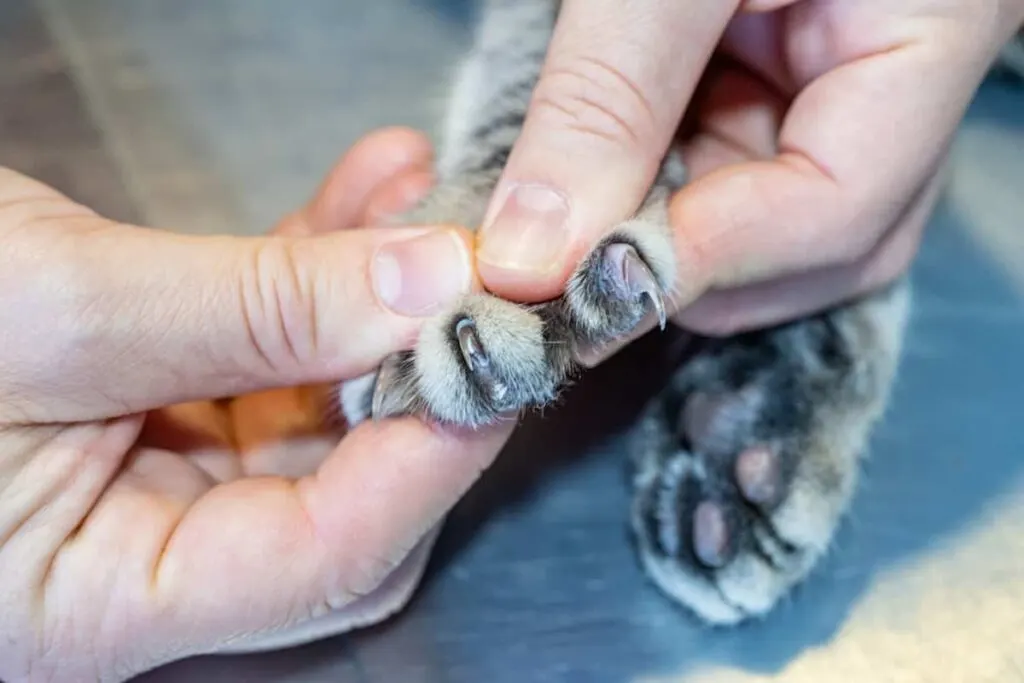
What to Do If You Accidentally Cut the Quick?
Accidentally cutting the quick while trimming your cat’s nails can be a painful experience for both you and your furry friend. Trust me; we’ve done it with our cat, which made him fearful of nail trimming for a while. He bled just a small amount as his reaction was quick, and we stopped immediately.
If this happens with you and your cat its important to take the following steps:
The first thing you should do is apply pressure to the affected nail with a clean cloth or tissue. This will help to stop the bleeding and prevent further injury. If the bleeding persists, you can use a styptic powder or stick to help clot the blood.
These products are available at most pet supply stores and can be a lifesaver in situations like this.
If your cat is in pain or discomfort, apply a cold compress to the affected area. This will help to reduce swelling and numb the pain. Just be sure to wrap the compress in a clean cloth or towel to prevent direct contact with your cat’s skin.
It’s important to note that you should never punish or scold your cat for accidentally cutting the quick. This can cause your cat to become fearful or anxious about future nail trims, making the process even more difficult. Instead, offer your cat plenty of love and reassurance, and take things slow and steady during future nail trims.
Accidents happen, so it’s important to be prepared for them. Keep a first aid kit on hand, including styptic powder, gauze, and other supplies, so you’re always ready to handle nail trimming mishaps.

My name is James, and welcome to FAQCats!
Along with our team of cat owners, expert pet enthusiasts, and pet professionals, we aim to write engaging helpful, engaging content about cats. At FAQCats we strive to provide content that’s accurate and fun to read. Our team writes about everything related to cats; even the most complex of topics. Through extensive research and caring for our own fur-pals, we’re able to provide something cat owners worldwide will love. Have a look around, and leave us feedback anytime!

